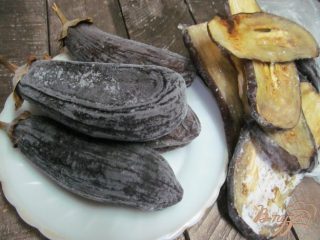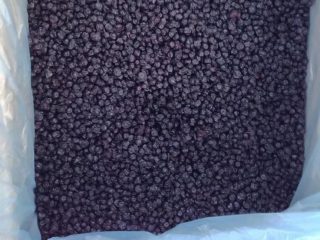Content
Radishes, like other vegetables, want to be preserved throughout the winter. Unfortunately, this root vegetable is not as unpretentious and stable as potatoes, carrots or beets. Preserving radishes for the whole winter is quite problematic - they quickly begin to deteriorate. Therefore, many housewives, in addition to traditional preparation methods, also use freezing, drying, pickling and other methods.
Features of radish storage
In order for radishes to be stored for a long time, preferably all winter, you need to start preparing them for this at the harvesting stage. Experienced summer residents water the area of the garden where the radishes grow in the evening (or 3 hours before harvesting). In the morning, they begin harvesting, removing the tops with a knife 2 cm above the root crop itself.
Late varieties are more suitable for long-term storage:
- Dungan;
- Red giant.
Other factors are also important, for example, the temperature and humidity of the room where the vegetables will be stored.The most favorable conditions will be the following:
- temperature from 0 to +4 degrees Celsius;
- humidity from 75 to 90%;
- lack of sunlight.
Based on the above conditions, the most suitable place would be a cellar or refrigerator.
How long do radishes last?
If you approach harvesting correctly, at a temperature of +2 - +4 degrees, the shelf life of radishes under normal conditions is 2-2.5 weeks. To preserve root crops until winter and beyond, it is necessary to create optimal conditions.
How to store fresh radishes
For long-term preservation, it is better not to use large root vegetables. If the harvest was harvested correctly, the tasty and fresh vegetable can be enjoyed for a very long time. To do this, various storage methods are used, which can be found in detail below.
How to store radishes in the basement
Fresh radishes are well suited for storage conditions in the basement. Root vegetables should be properly prepared for winter storage:
- trim roots, tops;
- Dry the root vegetables slightly;
- Sort the harvest, remove rotten specimens.
Place vegetables in clean wooden containers, such as boxes. Sprinkle with slightly damp sand.
How to store fresh radishes for the winter in the cellar
The storage temperature of radishes should be no higher than +2 - +5 degrees, humidity - about 90%. Place the root vegetables in dry boxes (plastic, wooden) in clear rows, sprinkling them with slightly moistened sand or sawdust. Do this in layers - each new layer of root vegetables should be completely immersed in sand. It is necessary to maintain the required humidity in the sand throughout storage and remove spoiled fruits.
How to store radishes in the refrigerator
To keep radishes fresh in the refrigerator for as long as possible, they should be placed in a glass container, with a little water poured into the bottom - 1-2 spoons will be enough. Place some vegetables on top so that the upper layers do not put too much pressure on the lower ones. Otherwise, the radishes below will crack and spoil. Be sure to cover with a lid.
You can use plastic bags to store radishes. Cut off the tops of root vegetables (do not touch the roots), leaving a couple of centimeters, then dry and pack. To ensure ventilation, do not tie the bag or make additional holes in it. Keep on the bottom shelf in the refrigerator.
Another way is to store radishes in the vegetable drawers found in every refrigerator. Prepare the container; it must be dry and sterile. Place the root vegetables in a neat layer, sprinkled with slightly damp and clean sand.
Method for storing radishes in water
The following method will increase the shelf life of fresh radishes to several months. Do not wash the root vegetables, just lightly wipe them to remove any dirty residue. Pour boiled (chilled) water into a jar and fill it with root vegetables. Pre-cut green tops. Change the water every 5 days.
Can radishes be frozen?
In old-type refrigerators, as well as those with a “nofrost” system, it is not possible to freeze radishes for the winter. The water contained in the pulp of root vegetables crystallizes and spoils the taste and other properties of the product. Therefore, after defrosting, radishes are not suitable for consumption.
To ensure that root vegetables do not lose their properties when frozen, it is necessary to have powerful freezing equipment. Freezing should be done at -40. Only in this case will all the properties of the vegetable be preserved, since the water will immediately turn into a solid state, bypassing the crystallization phase.
How to freeze radishes with cucumbers and herbs for okroshka
There is another option for freezing radishes - as part of vegetable mixtures for making okroshka. This is a cold summer dish (soup) that is usually not prepared in winter. But some people love this dish all year round.
Additional ingredients here are cucumbers and herbs (onions, dill, parsley). Wash all vegetables, dry and then chop into strips. Finely chop the greens. Mix the ingredients together.
Divide the mixture into portioned bags, the volume of which should correspond to one-time use. The vegetable mixture must be frozen in a thin layer. Then the cuttings can be laid out more compactly.
When preparing okroshka, add the vegetable mixture, without defrosting, to a pan with water (kvass, mineral water) and other ingredients involved in preparing okroshka. The shelf life of vegetable mixtures ends around the beginning of February. Some of the properties of radishes, of course, are lost as a result of freezing, but the taste and smell are still present.
How to dry radishes for the winter
Although it is not customary to dry radishes for the winter, some housewives do such preparations and claim that it is tasty and healthy. Some people doubt eating dried radishes because of their irritating effect on the digestive tract. Therefore, this question is not completely clear. To finally figure it out, it’s better to try it yourself.
In the modern world, drying vegetables has ceased to be a long and labor-intensive process. For a relatively small amount, you can purchase an electric dryer, which will greatly facilitate and speed up this task. Root vegetables should be selected whole, not spoiled. Wash them well, dry them, cut them into strips or thin slices. Place electric dryers on trays, which should be periodically swapped for more uniform drying.
You can also use an oven, gas or electric. The temperature should be no more than +40 - +60 degrees. The drying process will take about 5 hours. At first, the oven doors should be slightly open so that the moisture from the vegetables evaporates more intensively.
Drying radish chips
White Daikon radishes are most often used for drying. It is subsequently ground into powder and used as a spice. You can make chips from radishes. Cut the root vegetables into thin slices and dry them using any available method.
Ingredients:
- pink radish – 6 pcs.;
- sunflower oil - 1 tbsp. l.;
- salt;
- pepper;
- garlic powder;
- ground paprika.
Take spices either to taste, or a quarter of 1 tsp. Preheat the oven to +165 degrees. Line a tray with baking paper. Grate the radishes into thin slices and place them on a baking sheet in a thin layer. Brush the top of each piece with butter and sprinkle with the seasoning mixture.Place in the oven for a maximum of 10 minutes.
Carefully ensure that the chips do not burn; sometimes they take much less time to cook. Then remove the baking sheet, turn the chips over, grease with oil and sprinkle with seasonings. Bake for a few minutes, then remove and let cool. Only after this can they be removed from the baking sheet and transferred to a suitable container.
At home, the drying process can be carried out in conventional and electric dryers, ovens (gas, brick, electric), in the air, under the sun's rays. To preserve the beneficial properties, for which, in fact, the vegetable is prepared for the winter, the optimal temperature should be maintained - from + 40 to +50 degrees.
The readiness of root vegetables is determined by their uniformly wrinkled surface, as well as their soft, elastic consistency. When you press the pulp, no juice should come out.
How to store dried radishes
The shelf life of radishes increases significantly if you store the root vegetables in a cool, dry place. Wooden and glass containers, as well as paper, linen bags, and cardboard boxes can be used as containers. From time to time, dried radishes need to be sorted out.
If high humidity has accumulated in the room and the packaging is not tightly closed, dried root vegetables may become damp and moldy. If any are found, they need to be sent back to the cool oven for additional processing. The container in which the spoiled product was stored must also be dried.
Conclusion
There are various ways to preserve radishes for the winter. Drying and freezing are simple, accessible methods.Both methods allow you to maximally preserve the beneficial properties of the product for a long time, right up to winter.












